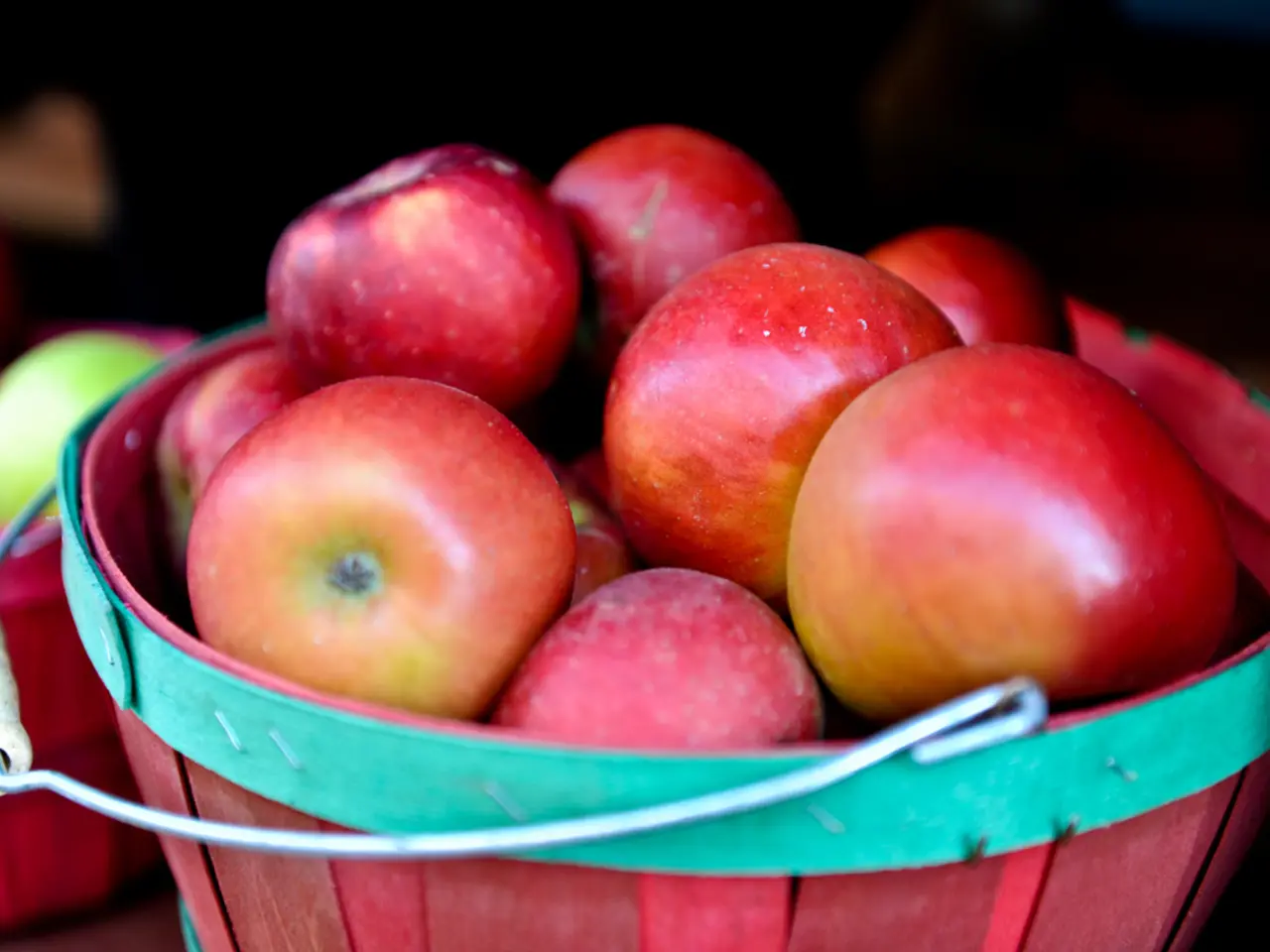("Apples' Cork Spot" and "Bitter Pit" Examination)
Managing Common Physiological Disorders in Apples: A Guide
Apples are a popular fruit, but they can be affected by various physiological disorders that impact their quality and visual appeal. Here's an overview of three common disorders: Bitter pit, Cork spot, and Jonathan spot, and how to manage them.
Bitter pit is characterized by small, dark, sunken spots on the apple skin and underlying flesh. This disorder is often caused by localized calcium deficiency in the fruit, which can be linked to uneven calcium distribution in the tree due to factors such as excessive nitrogen fertilization, irregular watering, and root damage.
To control bitter pit, focus on balanced fertilization, calcium sprays during fruit development, irrigation management, and selecting resistant cultivars.
Cork spot, similar to bitter pit but often described as larger, rough, corky areas on the fruit surface, is primarily caused by calcium deficiency and environmental stresses such as temperature fluctuations and poor calcium uptake. Management involves improving tree health, calcium nutrition, and avoiding excessive nitrogen.
Jonathan spot is most prevalent in the Jonathan cultivar, with Wealthy and Rome Beauty also being moderately susceptible. It manifests as small, dark, corky spots on the fruit surface. Causes are linked to calcium deficiency and sometimes magnesium imbalance. Control involves proper mineral nutrition and orchard management to reduce stress.
For comprehensive details on these disorders, consult university extension services, peer-reviewed articles, and authoritative horticultural guides. These resources provide etiologies and the latest management techniques.
In terms of control, proper fruit maturity at harvest and proper storage conditions are the best measures for Jonathan spot on susceptible varieties. For bitter pit, foliar spray applications of calcium chloride can help reduce incidence in established plantings.
It's important to note that both Cork spot and bitter pit damage occur mostly on the surface and in cell tissue just below the surface. In storage, Jonathan spot can develop in about two weeks regardless of the fruit's maturity at harvest, while bitter pit symptoms typically develop within a month or two after harvest.
In conclusion, understanding these physiological disorders and their causes is crucial for maintaining healthy apple trees and high-quality fruit. By implementing the appropriate control measures, growers can significantly reduce the impact of these disorders on their crops.
- Ensuring proper nutrient balance in the soil, particularly calcium, is essential for preventing disorders like bitter pit and Cork spot, as these can be caused by uneven calcium distribution in the tree due to factors such as excessive nitrogen fertilization and poor calcium uptake.
- To promote crop health and wellness, gardeners and farmers may consider integrating science-based evidence on nutrition, fitness-and-exercise, and health-and-wellness into their horticultural routines, as this can strengthen apple trees' resilience to physiological disorders.
- Consuming a balanced diet rich in fruits like apples, which are free of common physiological disorders, contributes positively to overall nutrition and well-being, reinforcing the importance of reducing these disorders in apple cultivation.




